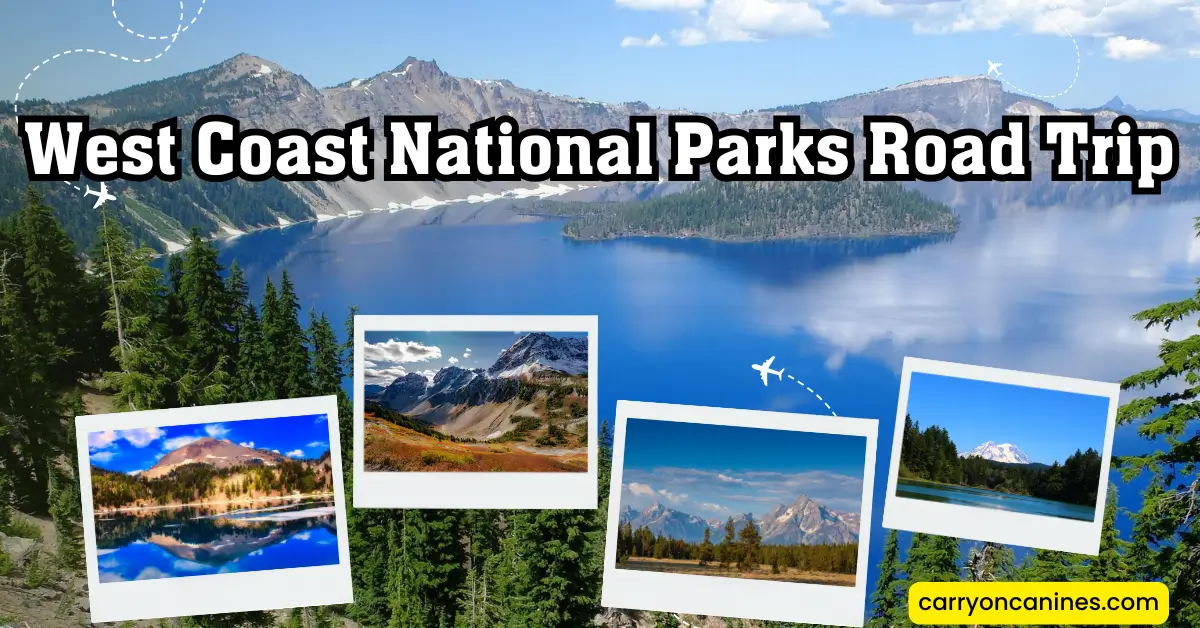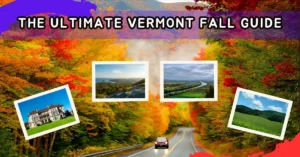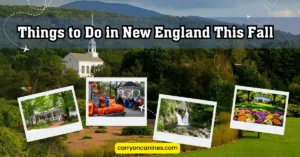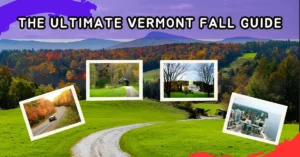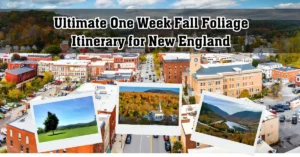When I first hit the road with my backpack and camera through the mountainous national parks of the West Coast, I expected stunning views. What I didn’t expect was how each park would have a completely different personality — from the volcanic steam vents in Lassen to the lush glacier-fed valleys in Glacier National Park. This guide is the result of that road trip — one that I refined across multiple seasons — and it’s packed with firsthand insights, clear routes, and park-by-park tips you won’t find lumped together in most lists. If you’re thinking of driving the western U.S. mountain spine from California up into Montana and Washington, this is your go-to companion.
What This Road Trip Covers
This mountain road trip takes you through three of the most dramatic mountain regions in the western United States. First is the Sierra Nevada, the towering snowcapped range that runs along eastern California and is home to Yosemite and Sequoia National Parks — places famous for their granite cliffs, ancient sequoias, and cascading waterfalls.
Next, you’ll venture into the Cascade Range, a volcanic chain stretching through Northern California, Oregon, and Washington. This region is known for its rugged peaks and geothermal features, especially in parks like Lassen Volcanic, Crater Lake, and Mount Rainier.
From there, the route leads you into the Northern Rockies, covering parts of Montana and northern Wyoming. These parks — including Glacier and Grand Teton — offer glacier-fed lakes, jagged mountain ridges, and some of the wildest backcountry in the continental U.S.
Throughout this journey, you’ll be traveling at high elevations, often between 4,000 and 10,000 feet. It’s important to stay hydrated, move at a slower pace, and allow time to acclimate, especially if you’re not used to altitude.
Lastly, several parks along the way — including Yosemite, Glacier, and Mount Rainier — now require timed-entry reservations during peak season. Booking your access early is essential if you want to explore these top destinations without hassle.
Sequoia and Kings Canyon National Parks, California
The first park I usually recommend to kick off your mountain journey is Sequoia. The air changes the moment you step beneath a sequoia grove — it smells like sun-warmed pine and damp earth. These trees are the largest living things on Earth, and seeing them in person makes the world feel both old and magical.
Why Go
- Located in the southern Sierra, making it an easy start from Los Angeles.
- Giant Forest is home to the General Sherman Tree, the largest by volume in the world.
- Kings Canyon has dramatic granite cliffs, roaring rivers, and fewer crowds.
What to Know Before You Go
- Best season: Late May to October when roads are open and snow-free.
- No timed entry required.
- Altitude ranges from 5,000 ft at campgrounds to 10,000+ ft on backcountry trails.
My Highlights
◦ Drive up to Moro Rock early in the morning. The stone steps lead you to a panoramic view that made me gasp out loud.
◦ Picnic near Zumwalt Meadow, where deer casually stroll by while you snack.
◦ Hike to Tokopah Falls if you’re not up for full-day adventures — it’s short, flat, and ends at a gorgeous 1,200-foot cascade.
Lodging Tips
◦ Book a night at Wuksachi Lodge if you want comfort with views.
◦ Lodgepole and Sentinel campgrounds are best for tent campers. Book 6 months ahead for summer weekends.
Quick Park Data
| Detail | Info |
|---|---|
| Park Entry | $35 per vehicle (7 days) |
| Best Trails | Moro Rock, Tokopah Falls, Rae Lakes Loop |
| Nearest Gas | Three Rivers (south), Grant Grove Market (limited) |
| Pets | Not allowed on trails |
Yosemite National Park, California
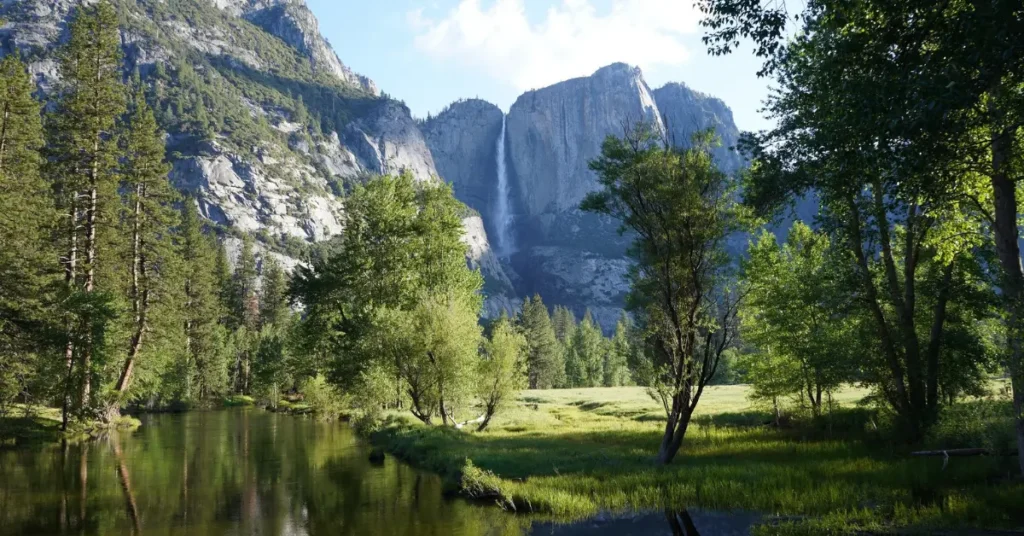
Yosemite is a place you don’t just visit — you remember it vividly for the rest of your life. I’ve stood beneath Bridalveil Fall when it thundered down like white silk, hiked Half Dome’s cables at sunrise, and camped under a sky so clear it felt unreal.
What Makes Yosemite Unique
- Iconic granite cliffs like El Capitan and Half Dome.
- Over 750,000 acres including alpine meadows, waterfalls, and giant sequoias.
- Glacial valleys carved thousands of years ago, still holding quiet reflections of the peaks above.
Important Travel Info
- Timed-entry required May through September, from 5 a.m. to 4 p.m.
- Expect major crowds — shoulder season (April and October) is the sweet spot.
- Tioga Road is closed in winter, often reopening mid to late June.
Best Things I’ve Done
◦ Sunrise hike to Glacier Point — drive early, bring breakfast, and watch the light creep over Half Dome.
◦ Hike Vernal and Nevada Falls via the Mist Trail — it’s steep, wet, and worth every step.
◦ Visit Tuolumne Meadows if you want Yosemite without the crowds. Fewer tourists, more silence.
Yosemite Travel Table
| Category | Detail |
|---|---|
| Entrance Fee | $35 or included in National Parks Pass |
| Trail Highlights | Mist Trail (7 mi), Taft Point (2.2 mi), Cathedral Lakes (8 mi) |
| Best Time to Visit | May-June (waterfalls at peak), September-October (fewer crowds) |
| Lodging Tip | Housekeeping Camp and Curry Village for budget-friendly inside-the-park stays |
| Internet | Weak — download maps and permits ahead of time |
Lassen Volcanic National Park, California
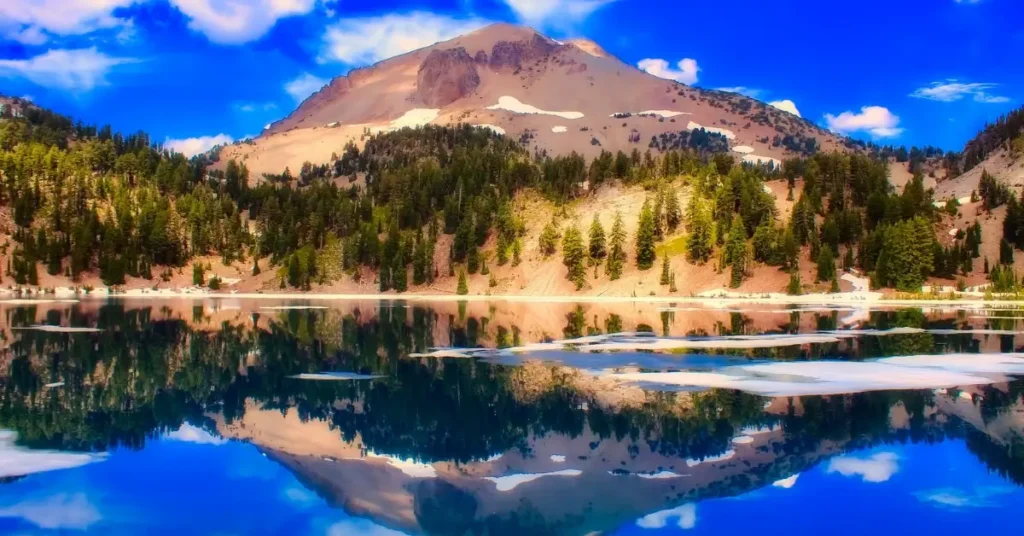
Lassen is easily one of the most overlooked parks in California, and yet it left me completely stunned. Imagine Yellowstone’s geysers, Mt. Shasta’s alpine landscape, and the peacefulness of a forest hike — all in one compact, uncrowded national park.
Why You’ll Love Lassen
- Home to all four types of volcanoes: plug dome, cinder cone, composite, and shield.
- Fewer than 500,000 annual visitors — you might have entire trails to yourself.
- Easily accessible from Redding or Lake Almanor.
Trail and Travel Notes
◦ Don’t miss Bumpass Hell trail — a 3-mile round-trip to colorful hydrothermal pools and steaming vents.
◦ Cinder Cone hike is a surreal experience with a panoramic reward at the top.
◦ Summit Lassen Peak in summer if you want a challenge — I did it in July and the views were phenomenal.
Park Snapshot
| Detail | Info |
|---|---|
| Entry Fee | $30 per vehicle |
| Busiest Time | July–August (still mild by national park standards) |
| Closures | Most roads closed November through May due to snow |
| Best Family Hike | Manzanita Lake Loop (1.5 miles) |
| Lodging | Campgrounds only — Manzanita Lake is my personal favorite for sunrise paddling |
Crater Lake National Park, Oregon
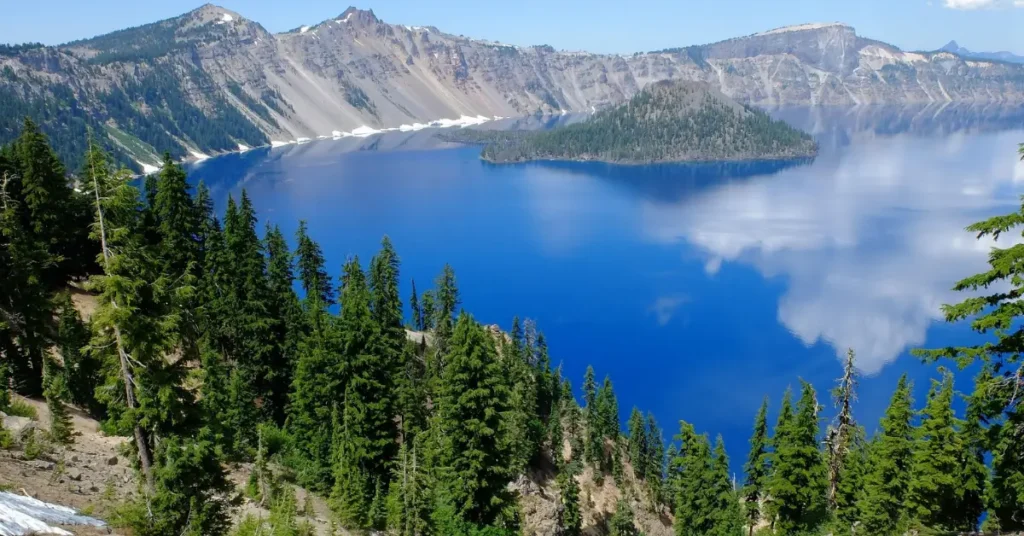
I remember the moment I saw Crater Lake for the first time — I thought my eyes were playing tricks on me. The water was impossibly blue, almost glowing. That vivid sapphire hue is due to the lake’s depth and clarity, and no photo ever quite does it justice. You really have to be there.
What Makes Crater Lake Special
- It’s the deepest lake in the U.S., formed by the collapse of Mount Mazama 7,700 years ago.
- There are no rivers feeding the lake — it’s entirely filled by rain and snowmelt.
- Crater Lake Lodge offers rustic elegance with lake-view dining, but it books months in advance.
My Tips From the Trail
◦ Rim Drive (33 miles) is the best scenic loop I’ve ever done — I recommend doing it clockwise for the best morning light on the lake.
◦ The Watchman Peak Trail is a must — it’s short but offers an unmatched view of Wizard Island at sunset.
◦ If you’re up for a real workout, hike down Cleetwood Cove Trail and take a boat tour — the only legal access to the water.
Park Planning Essentials
| Detail | Info |
|---|---|
| Entry Fee | $30 per vehicle |
| Best Season | July through September (roads snowed in rest of year) |
| Top Hikes | Watchman Peak (1.6 mi), Garfield Peak (3.4 mi), Cleetwood Cove (2.2 mi RT) |
| Lodging | Crater Lake Lodge, Mazama Village (cabins and camping) |
| Fuel & Food | Last gas in Prospect or Fort Klamath; limited snacks in park |
Mount Rainier National Park, Washington
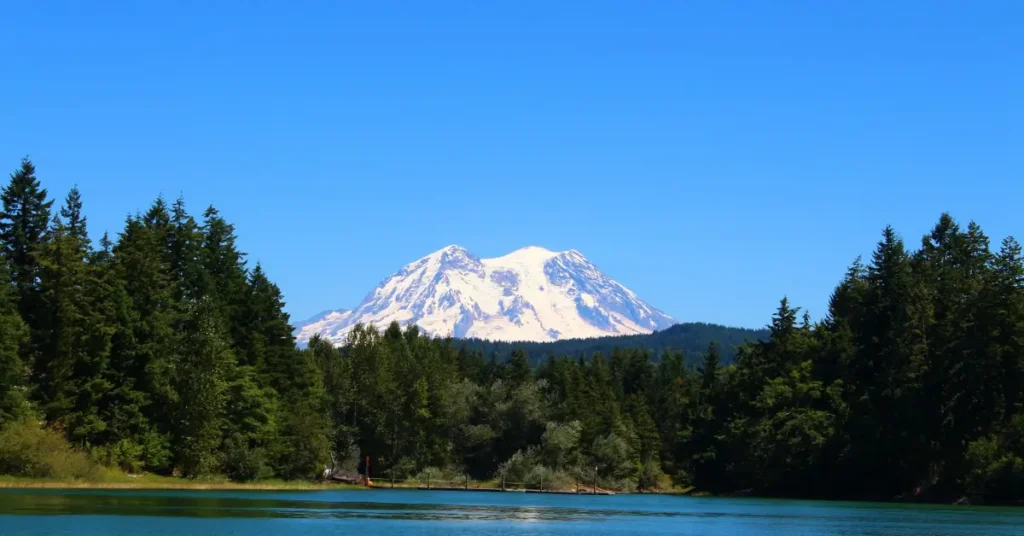
Mount Rainier looms large — both physically and emotionally — over the Pacific Northwest. At over 14,400 feet, it dominates the skyline from Seattle and Tacoma. But it’s not just the mountain that pulls you in — it’s the meadows bursting with wildflowers, the groves of ancient trees, and the sound of water pouring off glaciers in late summer.
My Experience on the Mountain
The first time I saw Rainier up close was from Sunrise, the highest point you can drive to in the park. It felt like standing on the edge of the world. Later that day, I hiked a portion of the Skyline Trail from Paradise — wildflowers were so thick it looked like a living painting.
Travel Guidance
◦ Timed-entry reservation required between July 4 and September 2, especially for Paradise and Sunrise areas.
◦ Expect crowds at Paradise by 10 a.m. — I always enter by 7 a.m. or after 5 p.m. for quiet trails and golden hour photos.
◦ Check for active road construction — Nisqually-to-Paradise routes may face delays.
Mount Rainier Snapshot
| Detail | Info |
|---|---|
| Entry Fee | $30 per vehicle |
| Best Month | August (for wildflowers) |
| Must-Hike Trail | Skyline Loop (5.5 miles) |
| Glacier Count | Over 25 named glaciers |
| Lodging | Paradise Inn (historic, books early), Cougar Rock Campground |
| Safety Note | Weather changes fast — bring layers, even in July |
North Cascades National Park, Washington
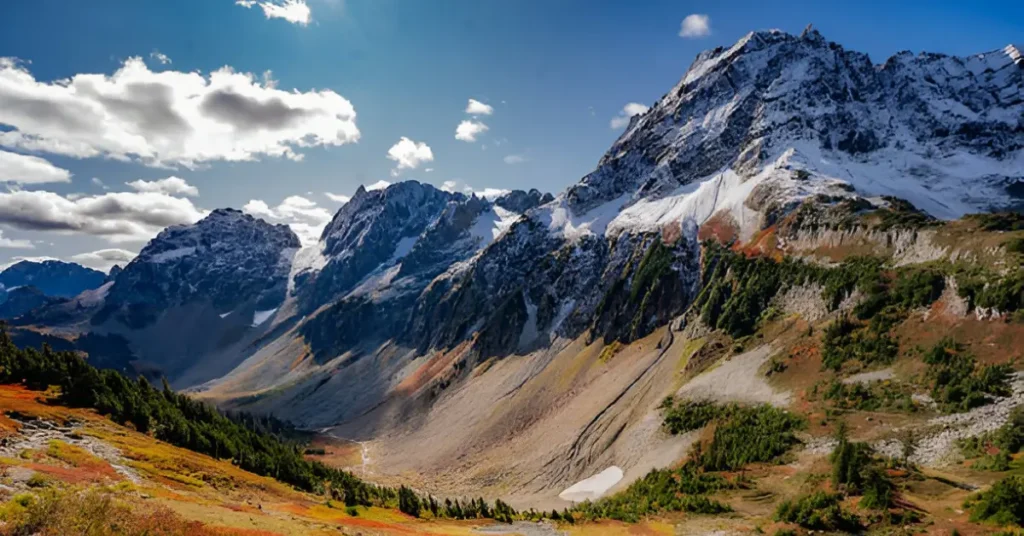
North Cascades is often called the “American Alps” and after hiking there, I get it. The jagged peaks, turquoise alpine lakes, and massive glaciers make this park feel rugged, remote, and wonderfully wild. Yet, it’s just a few hours from Seattle.
Why You’ll Want to Stop Here
- It’s one of the least-visited parks in the continental U.S., yet offers jaw-dropping views.
- No entry fee — yes, free.
- The hiking is steep and serious, but totally worth it if you’re fit and prepared.
My Favorite Experiences
◦ Hike to Blue Lake in fall when the larches turn golden — I timed it once in early October and felt like I’d stepped into a dream.
◦ Visit Diablo Lake Overlook, especially on a clear afternoon when the sun hits the jade-colored water just right.
◦ Ferry across Lake Chelan to Stehekin for an off-grid adventure — no roads in or out.
Key Trip Info
| Detail | Info |
|---|---|
| Entry | Free |
| Best Time to Visit | July–September |
| Must-Hikes | Maple Pass Loop (7.2 mi), Blue Lake (4.4 mi), Cascade Pass (7 mi RT) |
| Lodging | Colonial Creek Campground, North Cascades Lodge at Stehekin |
| Access Road | North Cascades Highway (SR-20) — seasonal, closed in winter |
Glacier National Park, Montana
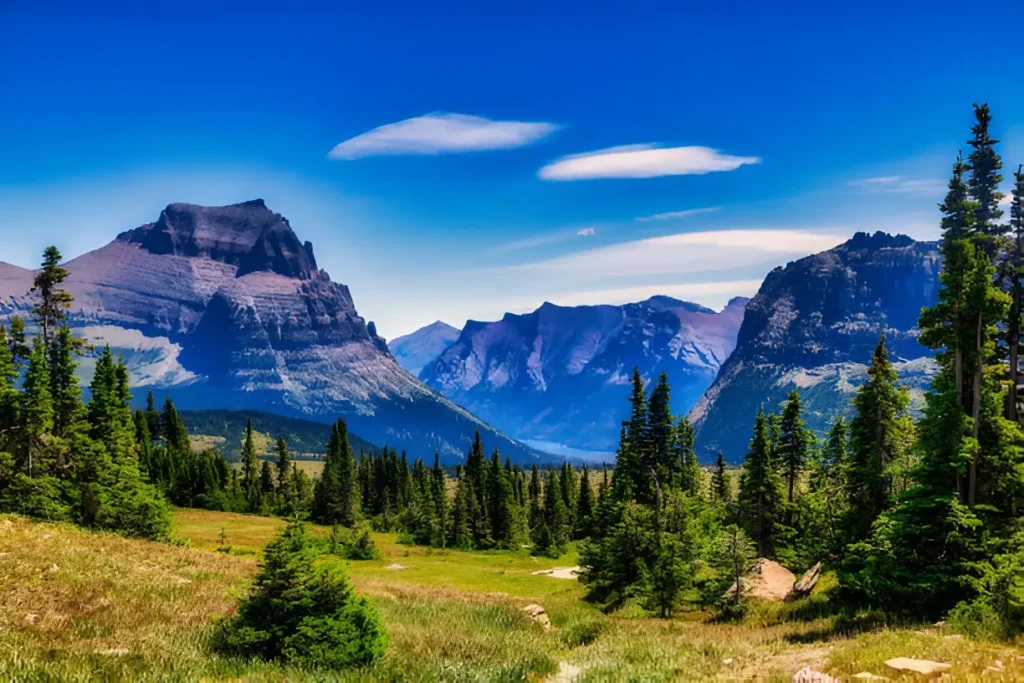
Crossing into Montana feels like stepping into postcard country. Glacier National Park has some of the most pristine mountain scenery I’ve ever seen — glacier-fed lakes, alpine tundra, and winding roads that make your heart race in all the right ways.
Going-to-the-Sun Road
Driving this 50-mile engineering marvel was one of the biggest highlights of my entire West Coast road trip. Every bend offers a new view — waterfalls crashing over cliffs, mountain goats clinging to ledges, and valleys blanketed in pine.
What You Need to Know
- Timed-entry permit required for Going-to-the-Sun Road from late June to mid-September.
- Logan Pass parking fills by 8 a.m. — use the shuttle or start early.
- East Glacier is quieter and just as stunning as the more popular west side.
Park Info Table
| Detail | Info |
|---|---|
| Entry Fee | $35 per vehicle |
| Must-Hike Trails | Highline Trail (11.8 mi), Hidden Lake Overlook (2.7 mi), Avalanche Lake (4.6 mi) |
| Best Lodging Tip | Many Glacier Hotel or Swiftcurrent Inn — close to top trailheads |
| Glaciers | ~25 named glaciers remain |
| Wildlife Seen | Grizzlies, moose, mountain goats, marmots |
Grand Teton and Yellowstone National Parks, Wyoming
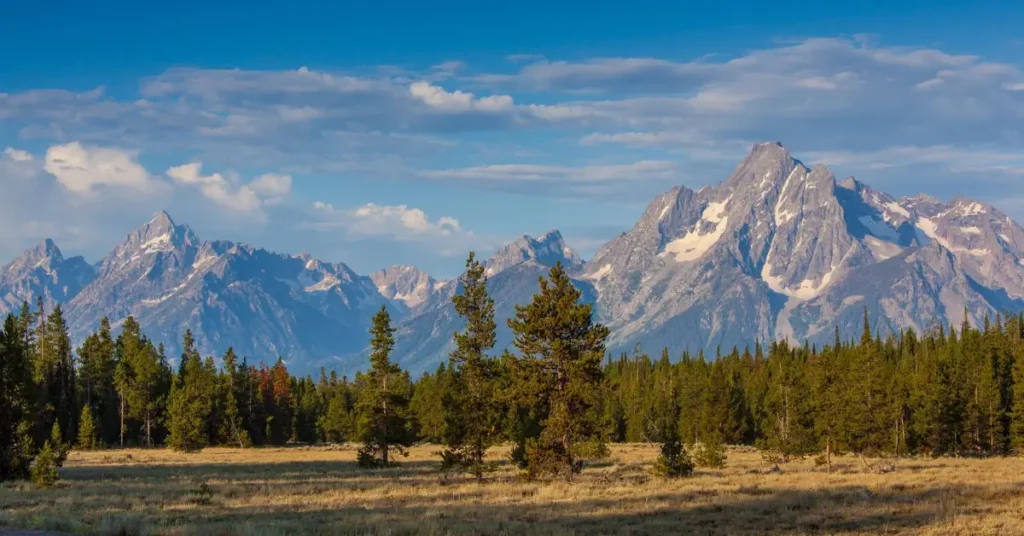
No mountain road trip through the West would be complete without passing through Wyoming’s crown jewels — Grand Teton and Yellowstone. I visited these back-to-back on the same leg of my trip, and their contrasts made the experience unforgettable. Grand Teton feels compact, crisp, and clean — like the sharp lines of a watercolor painting. Yellowstone, on the other hand, feels like an ancient, steaming world with endless stories unfolding beneath your feet.
Grand Teton National Park
Nestled just south of Yellowstone, Grand Teton National Park is a dream for mountain lovers. The Teton Range rises abruptly from the plains, and the effect is dramatic. I remember kayaking across Jenny Lake with the peaks towering overhead — it felt like paddling through a painting.
Why It Stands Out
- The mountains rise 7,000 feet above the valley floor — no foothills to soften the view.
- Easy access to classic hikes and scenic spots from Jackson Hole.
- Sunsets here are phenomenal — especially from Mormon Row or Snake River Overlook.
My Travel Advice
◦ Park early at Jenny Lake to beat the shuttle line. Hike to Hidden Falls and Inspiration Point if you have just a half day.
◦ Stay in Colter Bay cabins for access to the lake and quieter mornings.
◦ I once spotted four moose within an hour while hiking the Taggart Lake Loop in September.
| Detail | Info |
|---|---|
| Entry Fee | Included with Yellowstone or $35 separately |
| Best Trails | Cascade Canyon (moderate), Taggart Lake (easy), Paintbrush Canyon (advanced) |
| Best Months | June to September |
| Lodging | Colter Bay Village, Jackson Lake Lodge, or Signal Mountain Lodge |
| Altitude | Valley: 6,500 ft, summits: 13,000+ ft |
Yellowstone National Park
America’s first national park needs no introduction, but being there in person is humbling. I stood at the edge of the Grand Prismatic Spring and could feel the heat of the Earth beneath my feet. I watched Old Faithful erupt at twilight with only a handful of people around — something you don’t get in mid-day crowds.
What Makes It Unmissable
- More than 10,000 hydrothermal features, including geysers, mud pots, and hot springs.
- One of the most diverse wildlife zones in the U.S. — bison, elk, wolves, grizzlies.
- The geology is alive — Yellowstone is a massive supervolcano.
Insider Tips
◦ Start your day early to see wildlife along the Lamar Valley. I’ve seen wolves, foxes, and entire bison herds before 8 a.m.
◦ Hayden Valley is also a great sunset spot for wildlife viewing — bring binoculars.
◦ Drive the loop in 2-3 days for a full experience. The park is bigger than Rhode Island!
| Detail | Info |
|---|---|
| Entry Fee | $35 or included in America the Beautiful pass |
| Can’t-Miss Sights | Grand Prismatic Spring, Mammoth Hot Springs, Lamar Valley, Yellowstone Lake |
| Lodging | Old Faithful Inn, Canyon Lodge, Roosevelt Cabins (book early) |
| Best Season | Late May to early October |
| Road Closures | Most roads close Nov–Apr due to snow |
West Coast Mountain National Park Road Trip Planner
| Park | State | Timed Entry | Season Best For | Must-Hike Trail | My Top Tip |
|---|---|---|---|---|---|
| Sequoia & Kings Canyon | California | No | May–Oct | Rae Lakes Loop | Visit both parks together |
| Yosemite | California | Yes (May–Sep) | May–Jun, Sep–Oct | Mist Trail | Enter before 5 am or after 4 pm |
| Lassen Volcanic | California | No | Jul–Sep | Bumpass Hell | Arrive early to avoid small parking lots |
| Crater Lake | Oregon | No | Jul–Sep | Watchman Peak | Drive Rim Road clockwise |
| Mount Rainier | Washington | Yes (Jul–Sep) | Aug | Skyline Loop | Bring layers and head out early |
| North Cascades | Washington | No | Jul–Sep | Maple Pass Loop | Free park with epic views |
| Glacier | Montana | Yes (Jun–Sep) | Jul–Sep | Highline Trail | Book Many Glacier lodging early |
| Grand Teton | Wyoming | No | Jun–Sep | Cascade Canyon | Pair it with Yellowstone for max impact |
| Yellowstone | WY/MT/ID | No | Jun–Sep | Fairy Falls | Stay in or near the park to avoid long drives |
Summary
If you’re dreaming of a road trip that captures the scale and spirit of the American West, this route through the mountain national parks is the one to do. I’ve done it more than once — in summer, in shoulder season, even in late snow — and each time revealed new surprises. You’ll drive through towering granite cliffs, walk along alpine lakes fed by glacial melt, soak in natural hot springs, and watch wild animals roam through wide valleys untouched by time.
Whether you choose to visit two parks or all nine listed here, the key is to plan around the seasons, understand the altitude shifts, and respect the scale of these incredible landscapes. I hope this guide helps you not just plan your trip, but live it fully.

